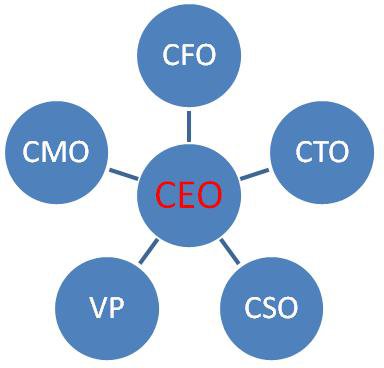
The Unpredictable CEO’s Destruction of their Senior Leaders
What a waste when bright, competent senior leaders who report to the CEO hang back, and fail to lead their company assertively. When they tiptoe around the CEO and wait for permission to take charge.
This is a particular problem for middle market CEOs, whose top executives typically rise through the ranks and have not held senior management positions at a number of companies and developed confidence about taking initiative at the highest levels.
Mid-market firms have small leadership teams but must get a lot accomplished. This requires all top team members to lead with confidence, working with each other as well as with their CEO.
Too often the fault lies at the feet of the CEO. Usually strong, passionate and driven, their emotion and attitudes are often apparent—too apparent. Frustration, anger or impulsiveness coming from the lips of the CEO makes everyone around them timid, looking for ways to calm the CEO down rather than to take initiative. Even short outbursts are toxic, and longer term grudges are even costlier. I’ve heard senior leaders talk about “being out of favor” or “in the doghouse” for months. Once they’ve recovered their credibility with the CEO, they think twice about “telling the emperor he has no clothes” or about doing anything that might be taken poorly, and land them back out of favor.
Senior leaders with excellent domain experience don’t make necessary decisions in their domain nor do they strongly advocate for their opinion on strategic decisions for the firm. Instead they quietly make suggestions or leave hints for the CEO and look for signals of approval.
The result is a growth limiting, timid senior team that operates like a hub and spokes, where everything is run through the CEO. This is fine for small businesses, but mid-market firms operating this way overwhelm the CEO, senior leaders do not communicate directly, and new ideas and innovation get stifled. Nobody pushes the CEO out of his comfort zone lest he make it uncomfortable in return.
Is this the way we want our top leadership behaving? No!
Don’t get me wrong, I’m all in favor of rewarding results and of consequences for failure. In fact, the rewards and consequences for performance should be predictable and obvious. But that is completely different than a pattern of CEO behavior that your team finds unpredictable or based on mood or stress level.
Unpredictable is one of the worst attributes a leader can have. Is this you?
If it is, here are a few things to think about:
- Self-recognition of the issue is a complete pre-requisite to improving. Having a 360 review (with complete confidentiality assured) asking the right questions can help.
- Self-discipline and self-control is the next step. Many CEOs who are owners or are appointed by the family are very secure in their job and sometimes act like it. But that’s not the point. The point is getting peak performance from your team and growing to the next level. Reflect on your behavior each day, or each week. There are some executive coaches (not me) who specialize in this area.
- Hide when you’re out of control. When we really get upset we can cause great damage. In all honesty, as a CEO there were days when my door was closed because I would have “blown it” had I interacted with others.
- Occasionally a CEO can have a right-hand person who can shield others. This may be worth trying; the CEO’s attitude is rarely is hidden from the top team.
Senior leaders need a CEO who encourages assertive leadership and risk taking, and doesn’t build fear around being a real leader. Rest assured, most CEOs dream of having a team of proactive leaders driving the company forward on their own, with the CEO simply steering. Make sure you’re not killing your own dream.
Tags: assertiveness, culture and morale, emotional intelligence, human resources, interpersonal acumen, leadership acumen, senior leader development
 Robert Sher is founding principal of CEO to CEO, a consulting firm of former chief executives that improves the leadership infrastructure of midsized companies seeking to accelerate their performance. He was chief executive of Bentley Publishing Group from 1984 to 2006 and steered the firm to become a leading player in its industry (decorative art publishing).
Robert Sher is founding principal of CEO to CEO, a consulting firm of former chief executives that improves the leadership infrastructure of midsized companies seeking to accelerate their performance. He was chief executive of Bentley Publishing Group from 1984 to 2006 and steered the firm to become a leading player in its industry (decorative art publishing).